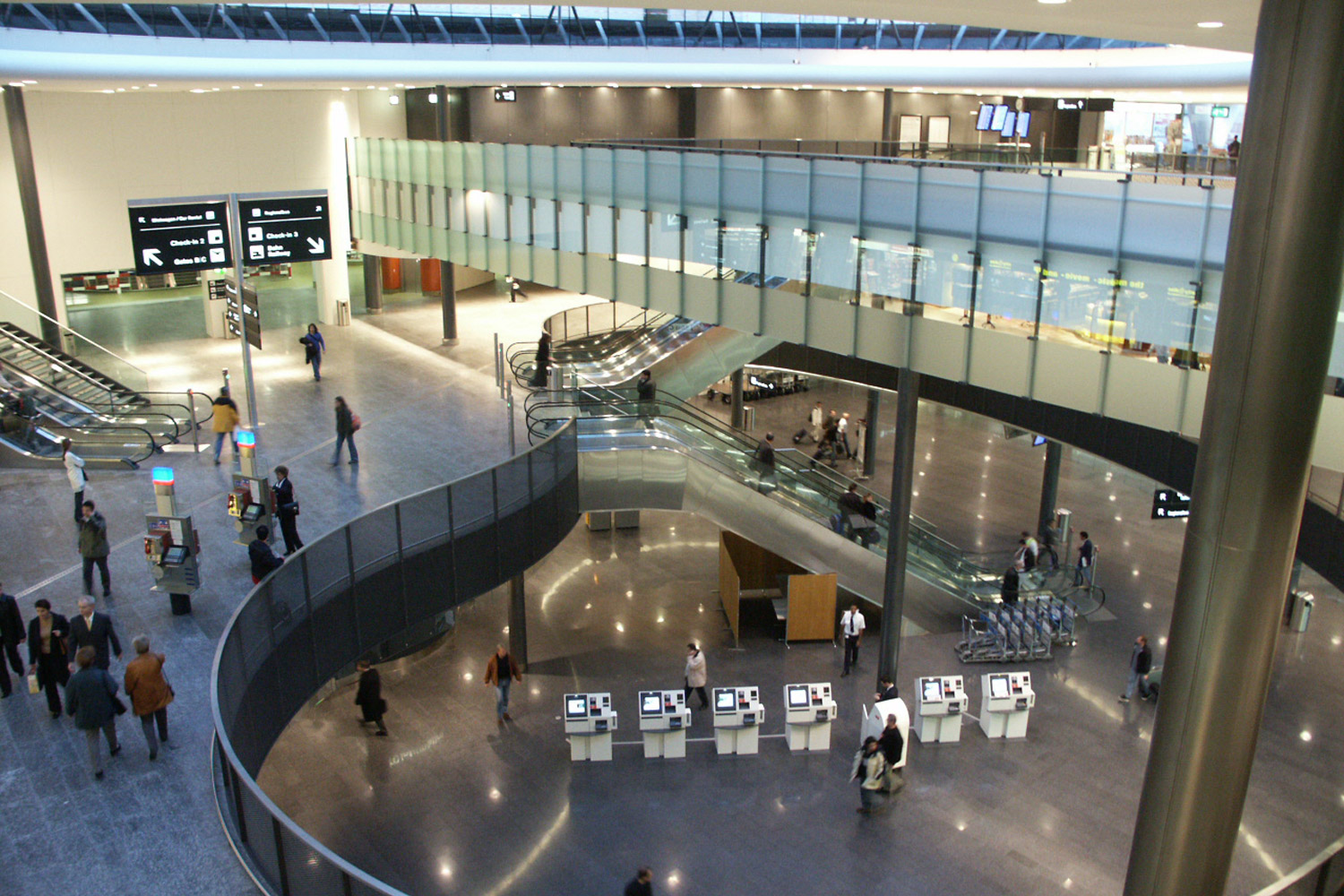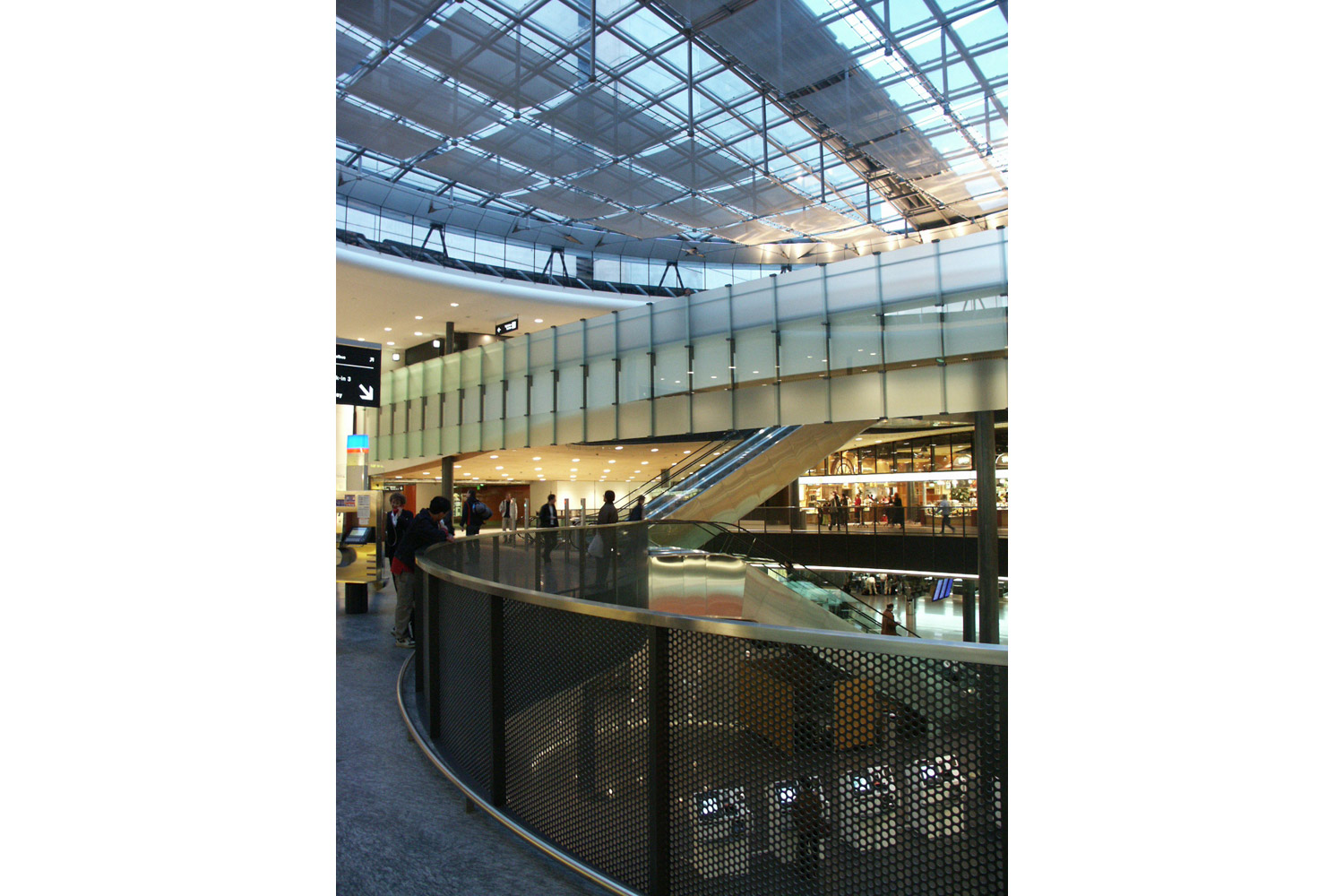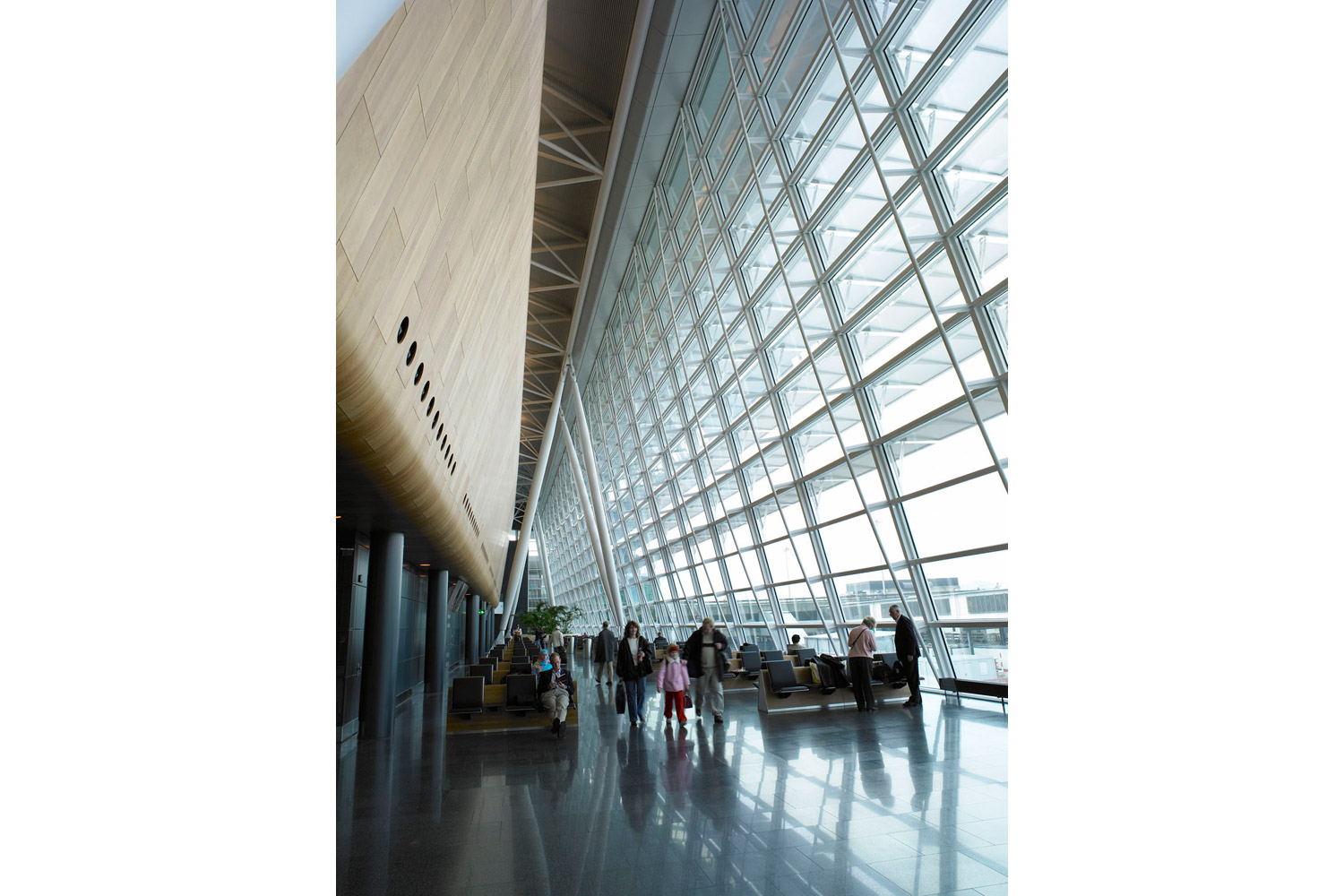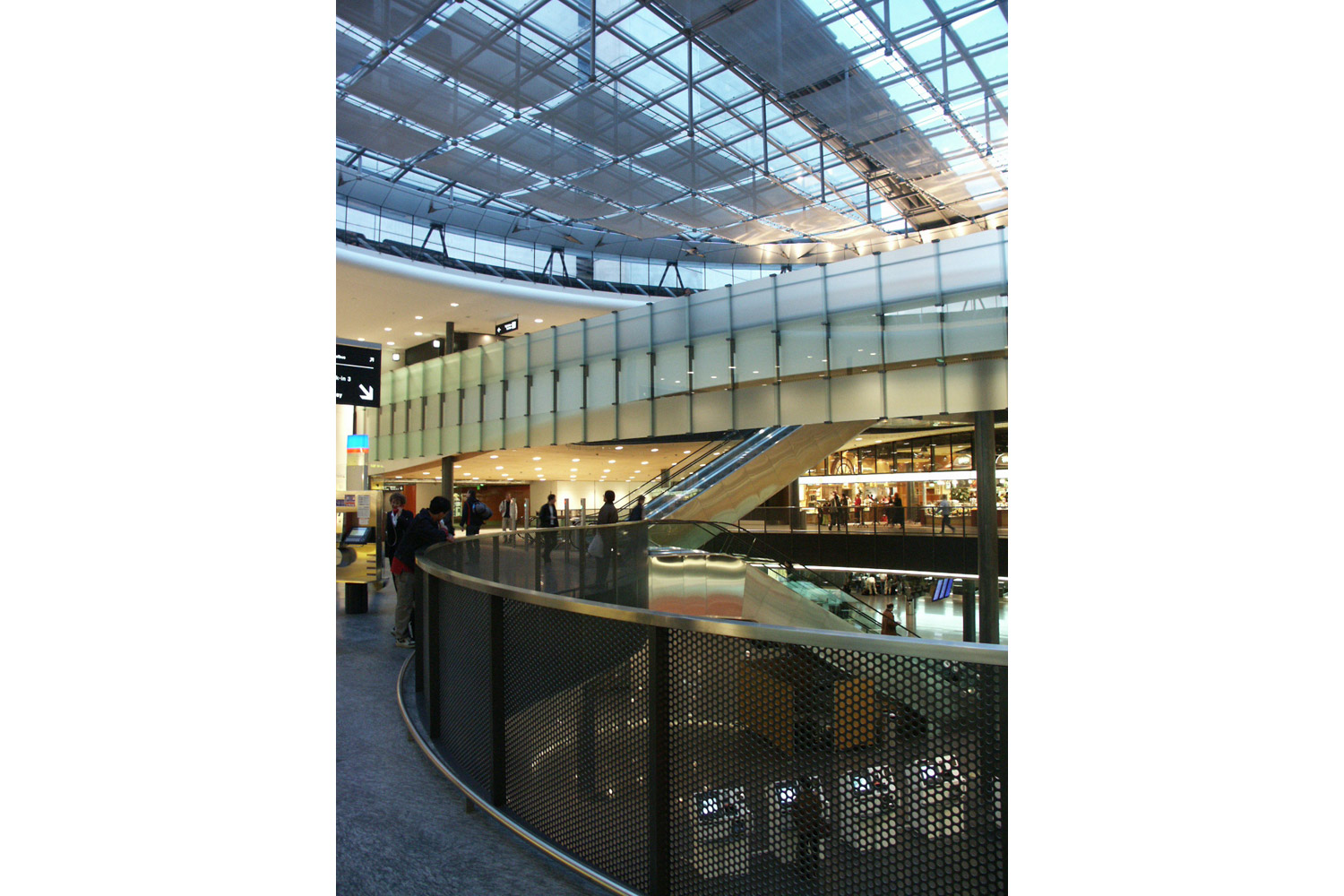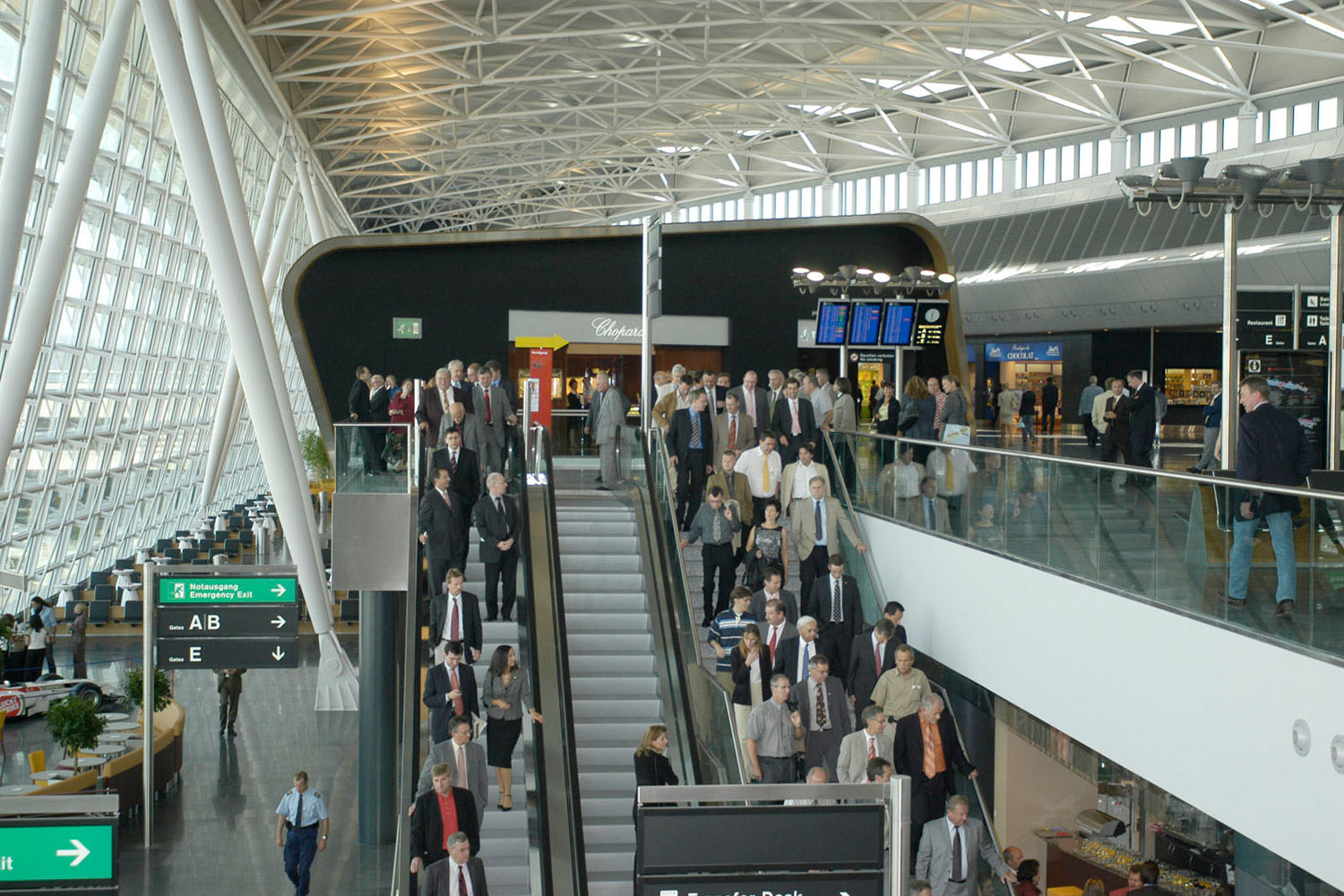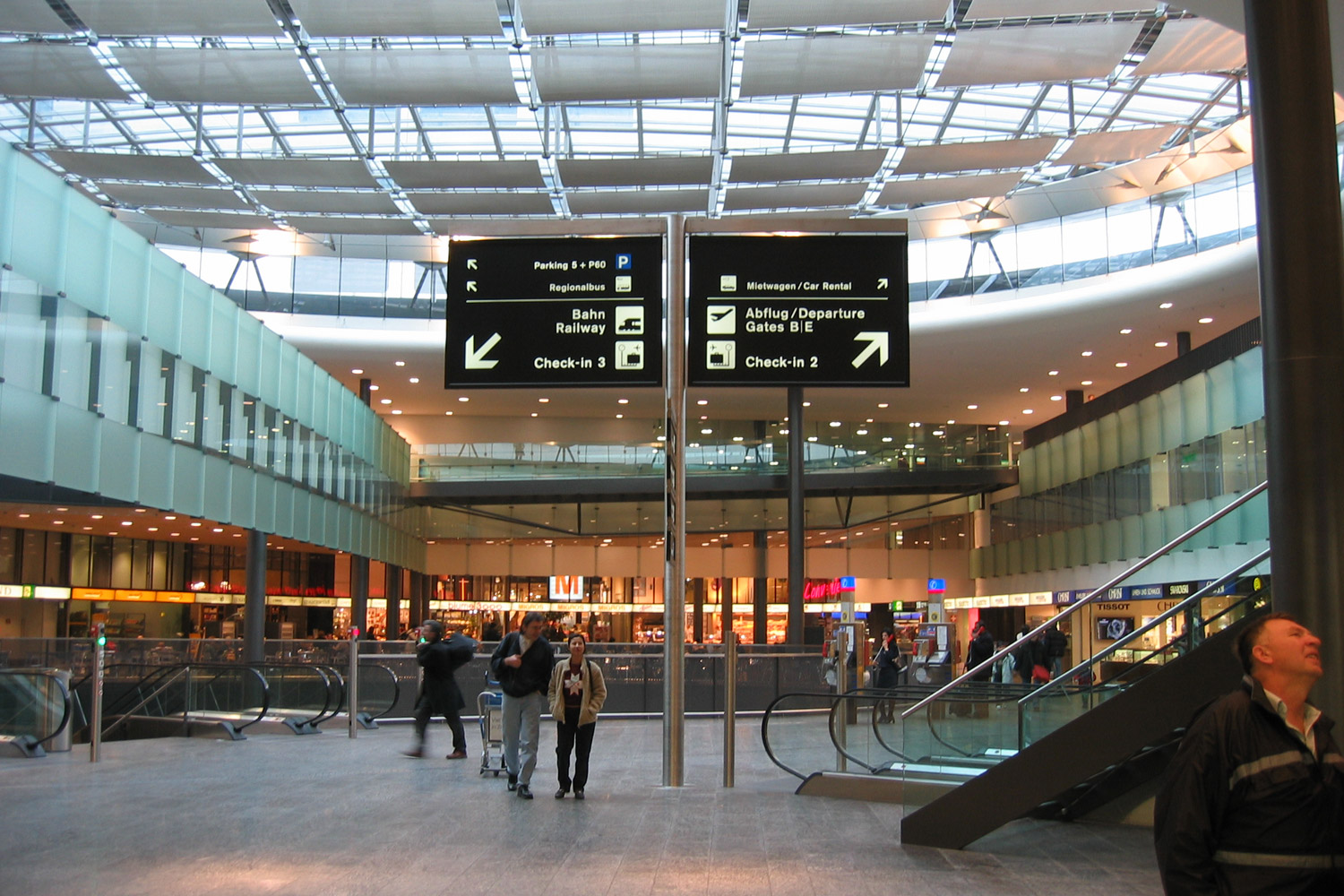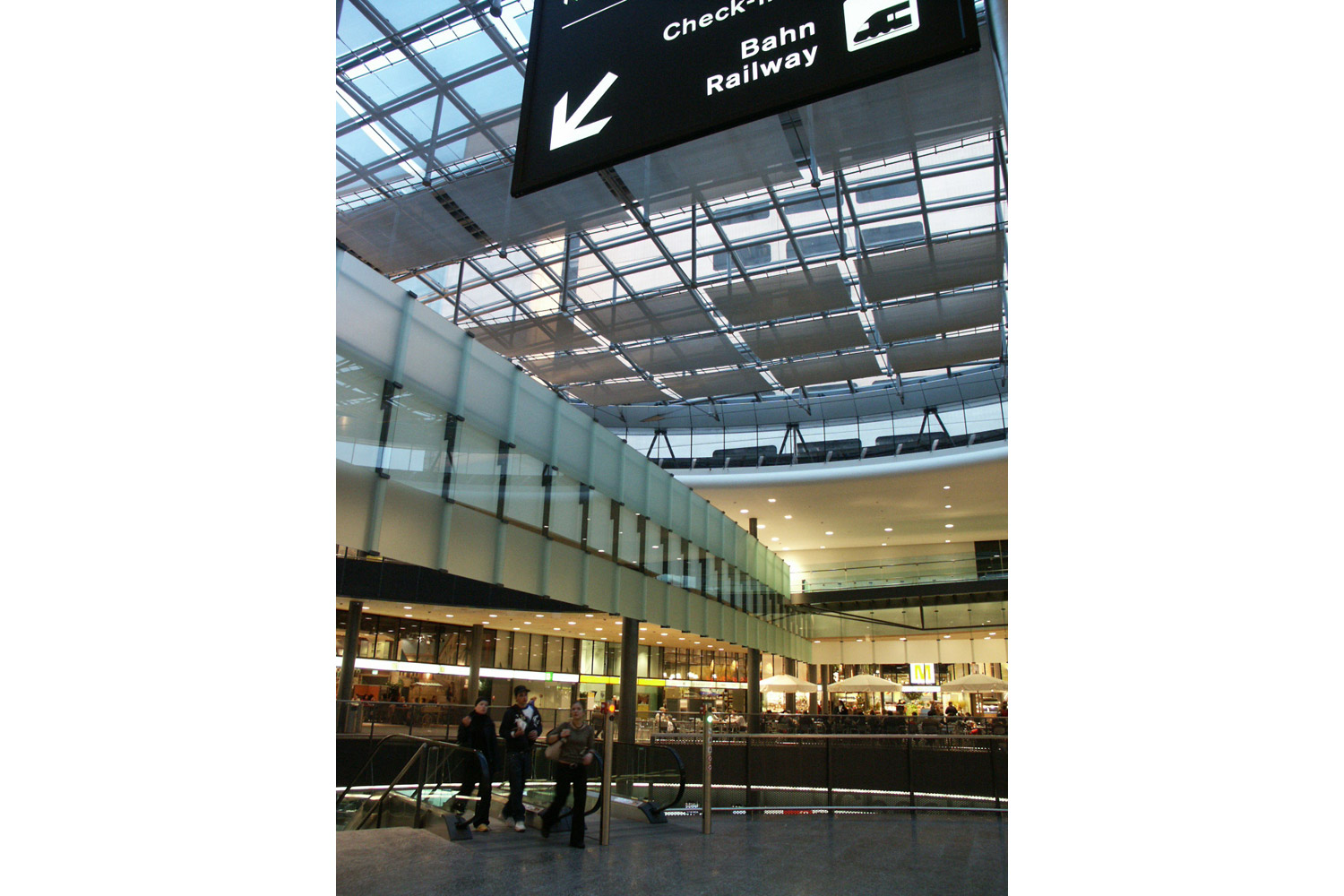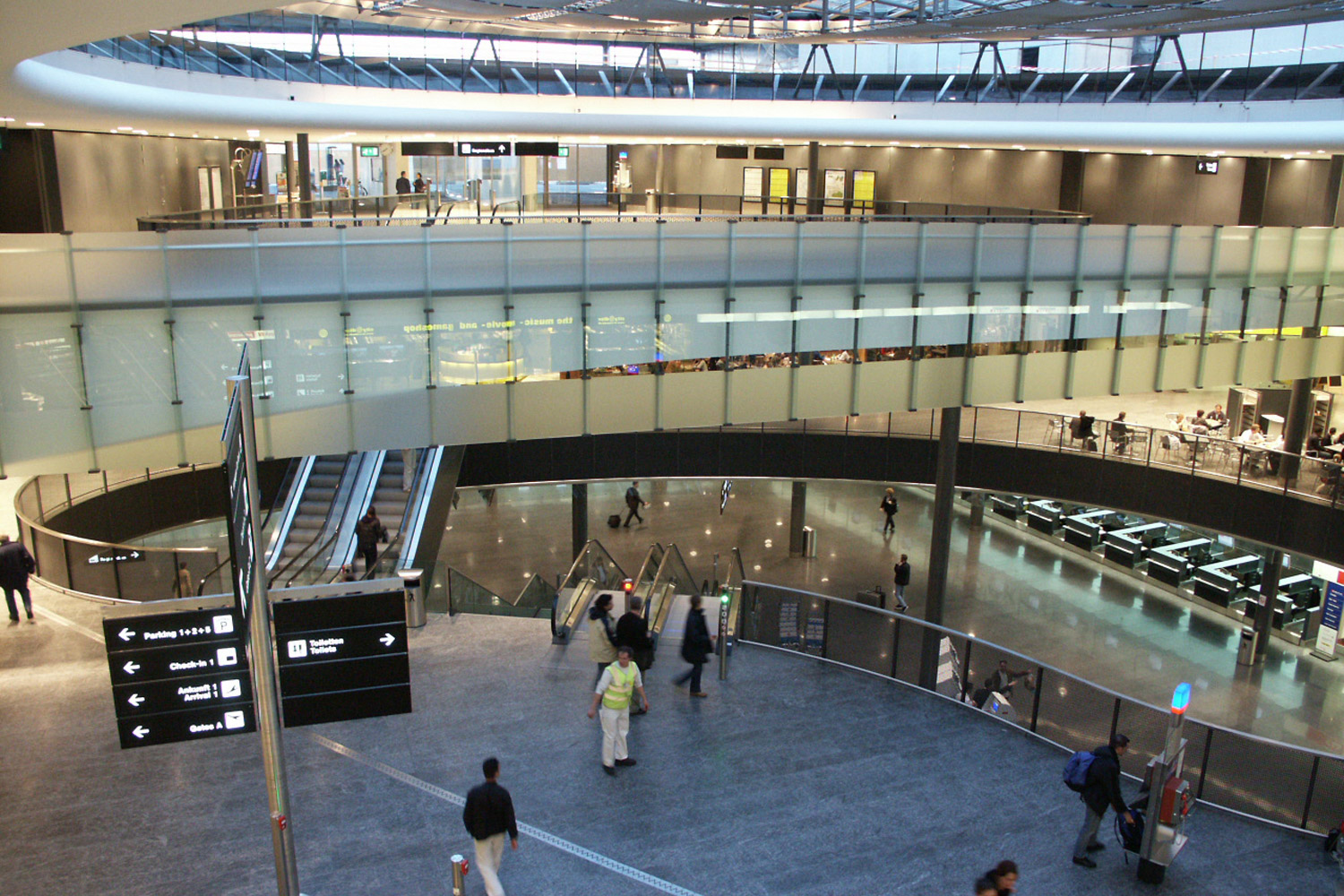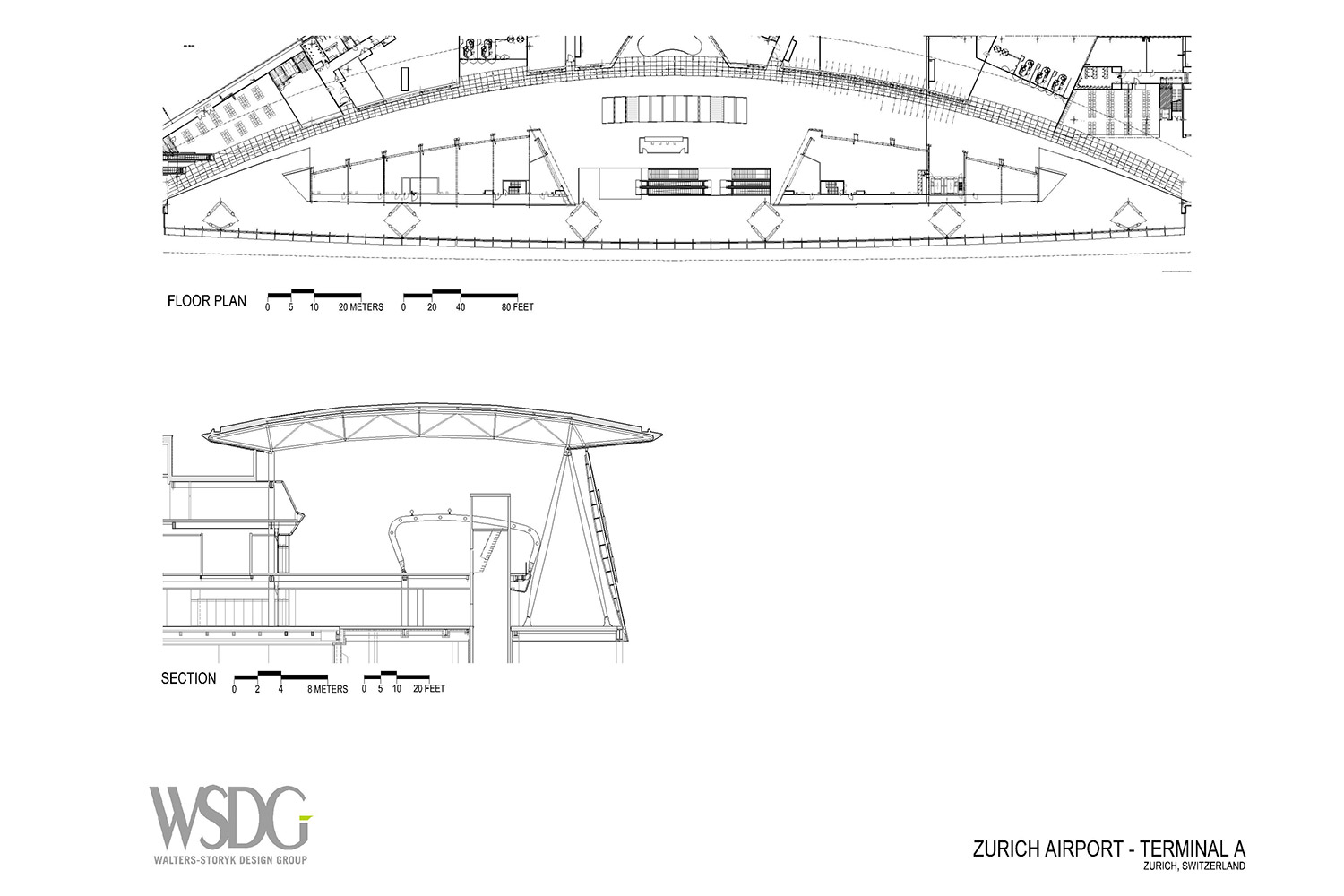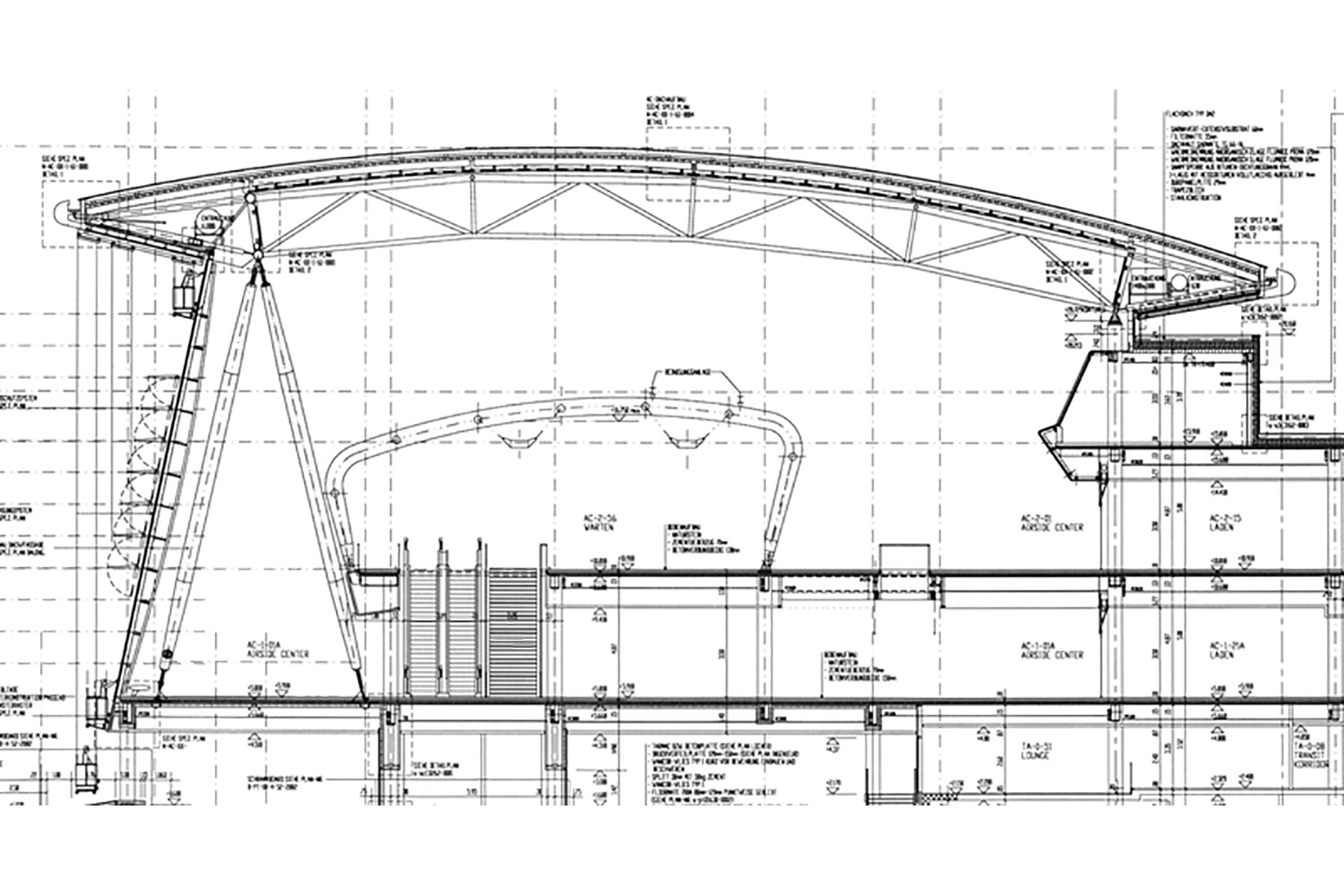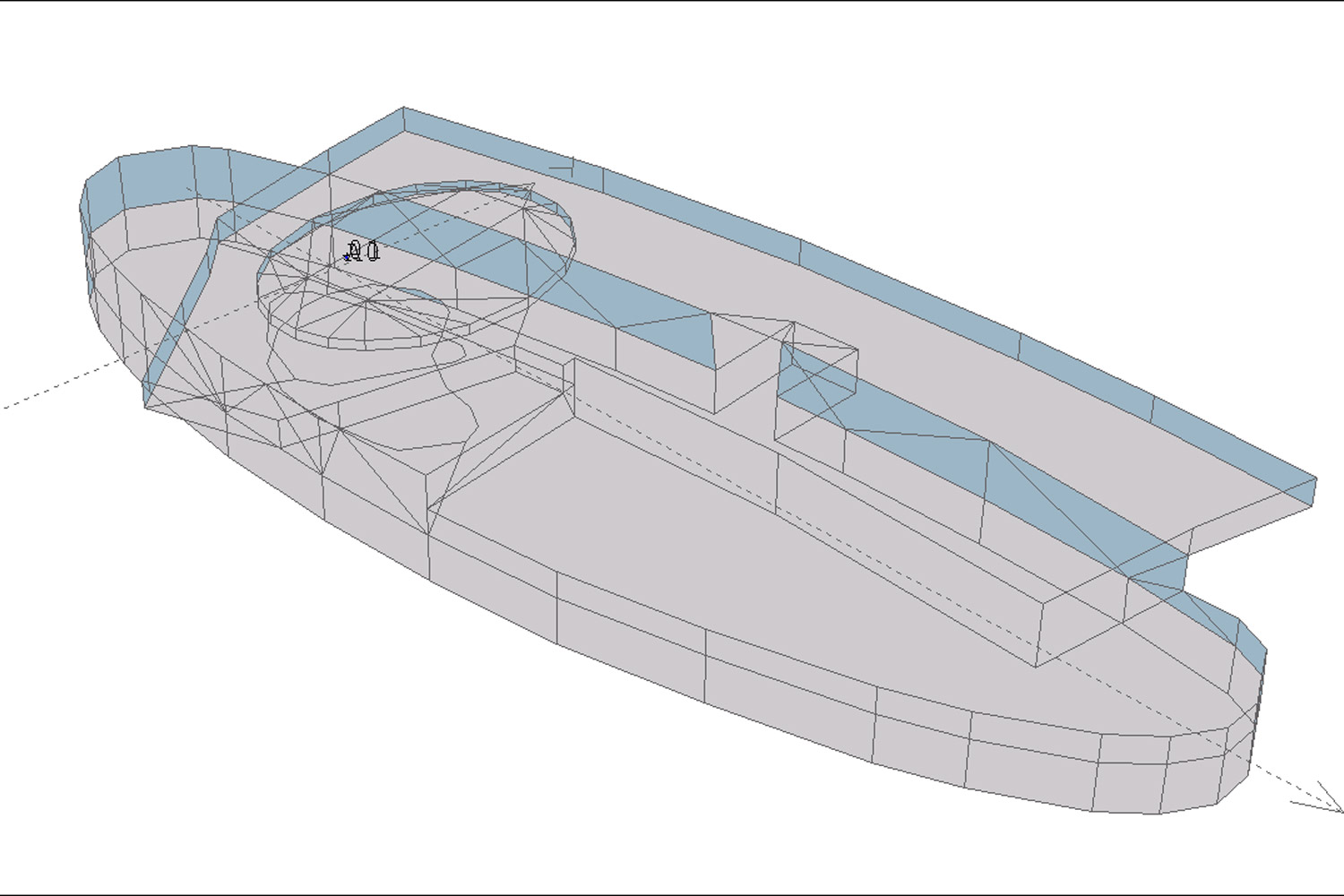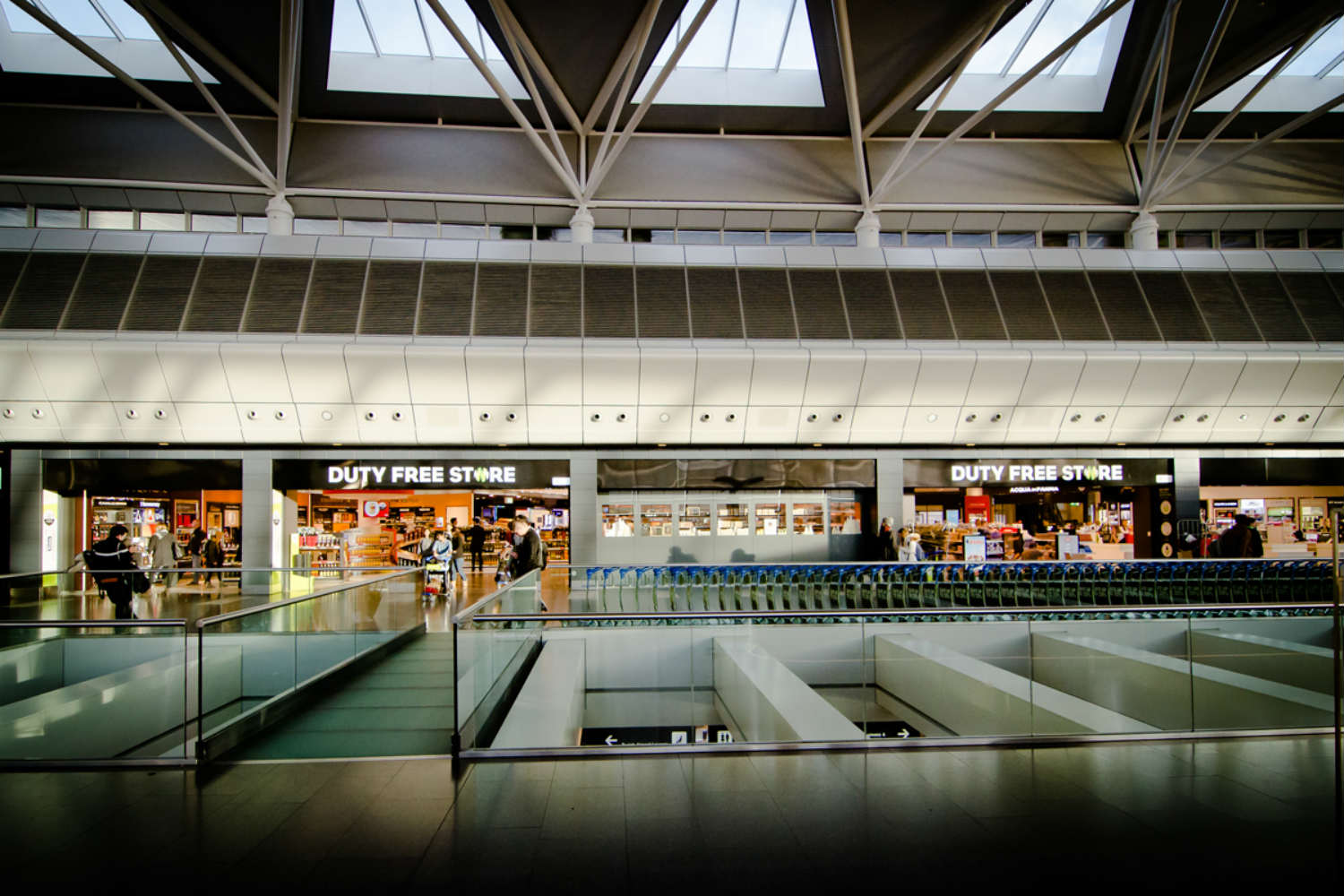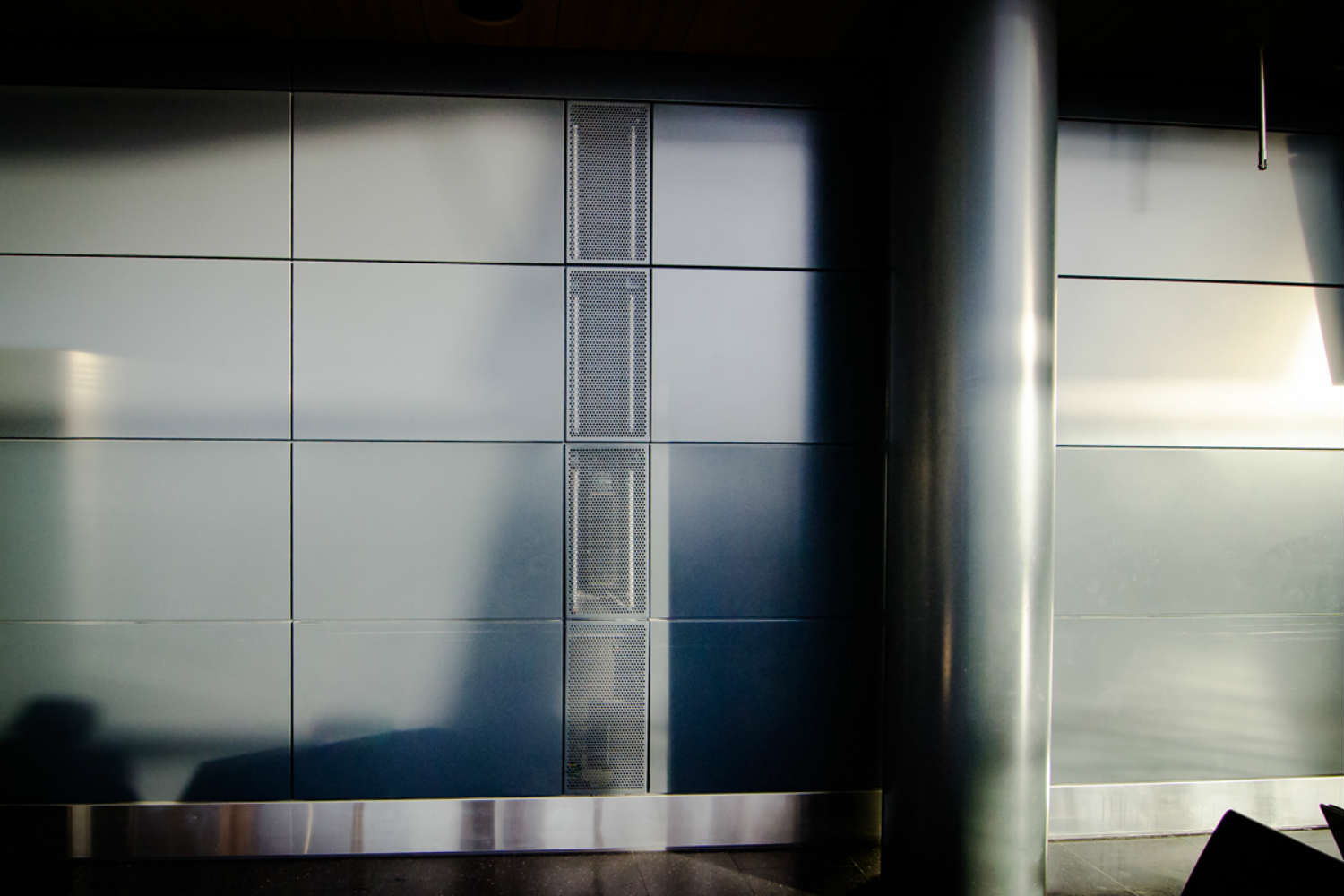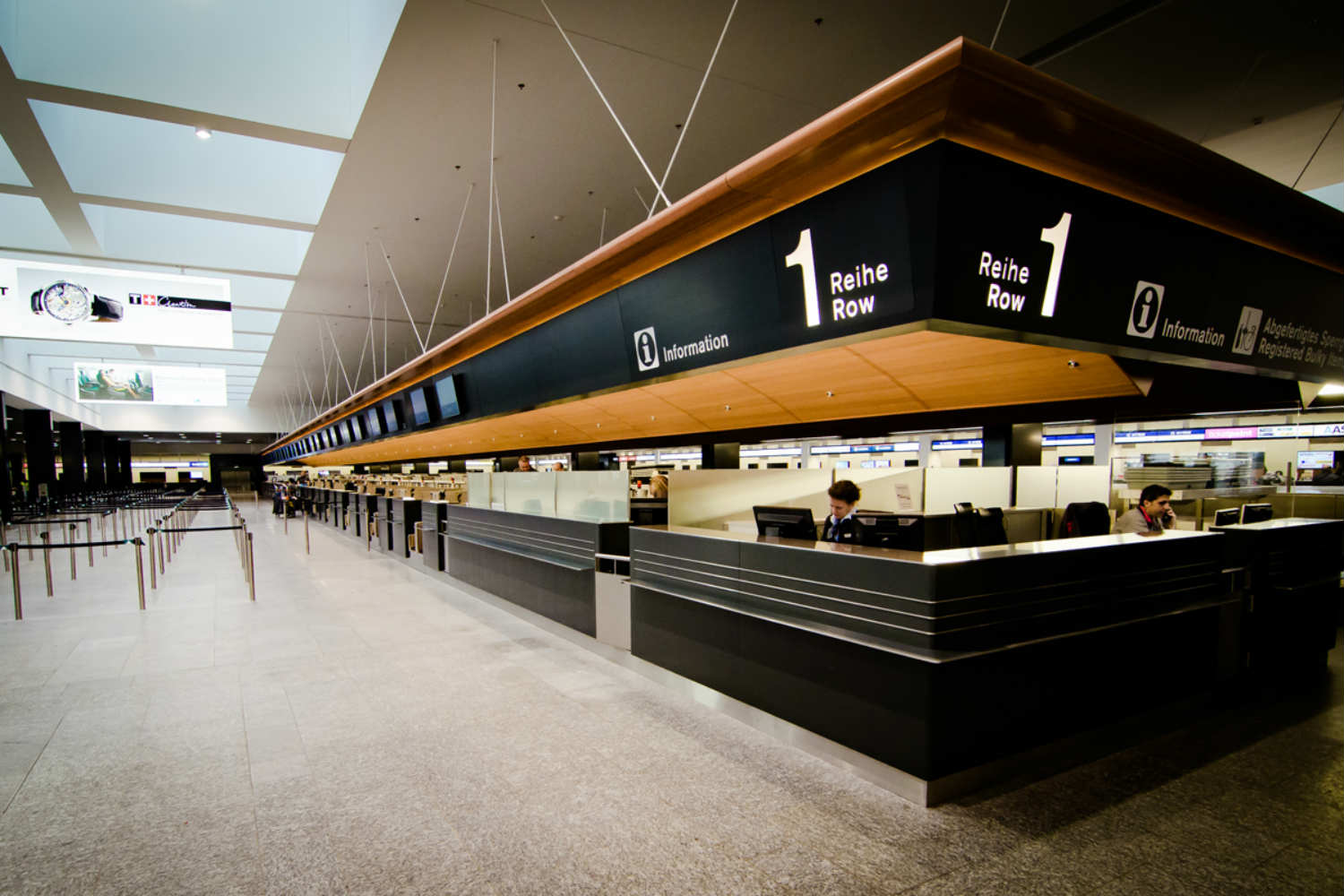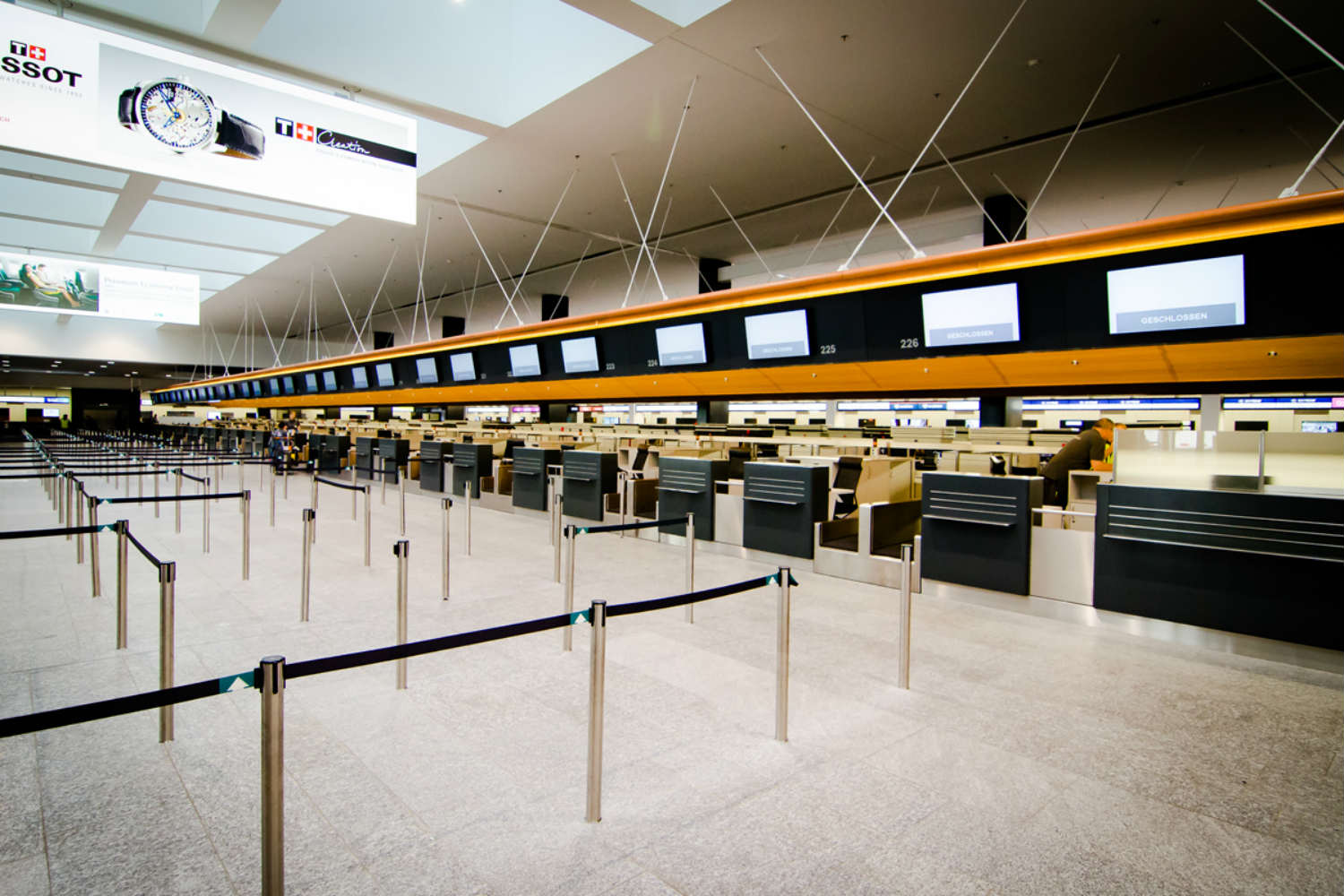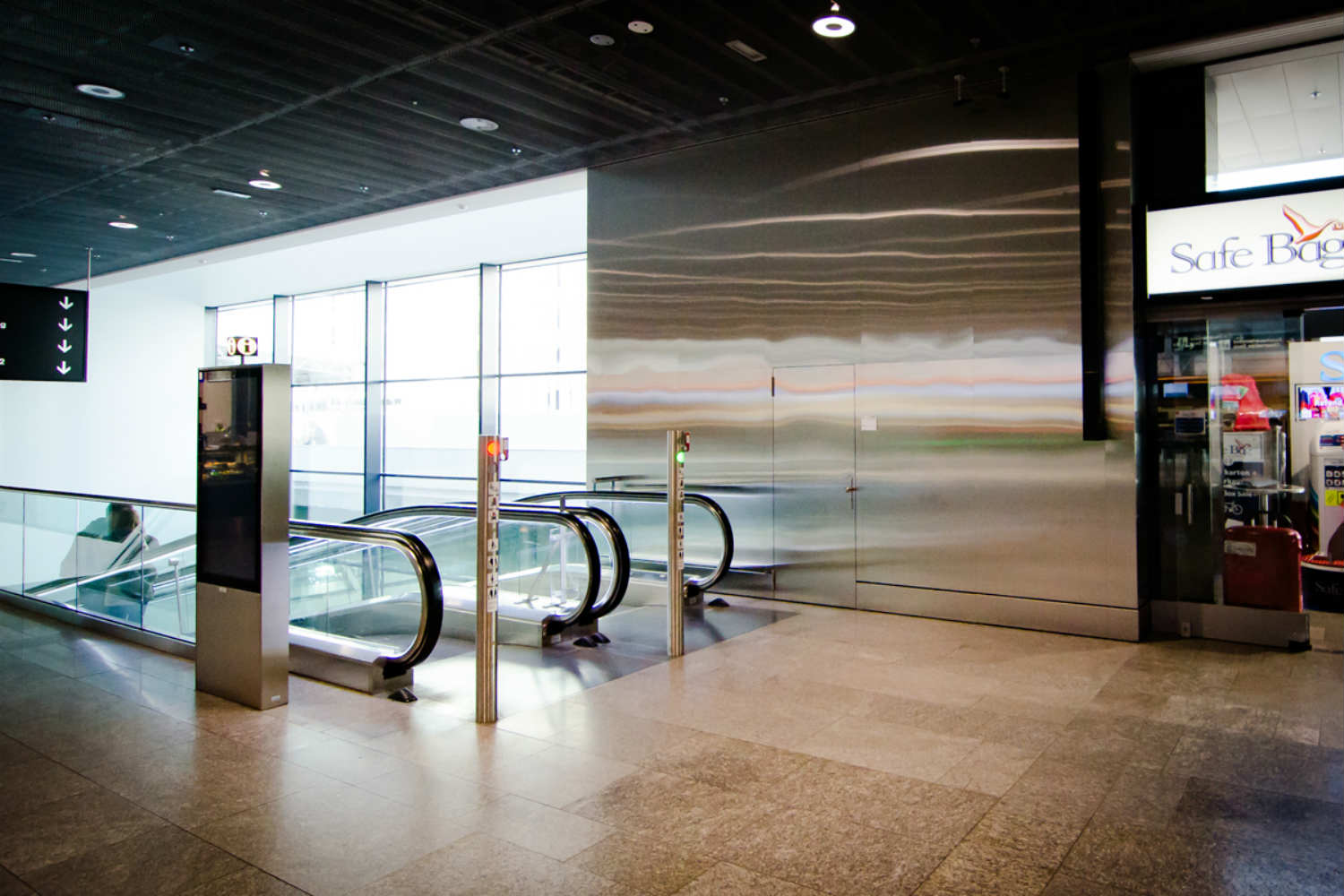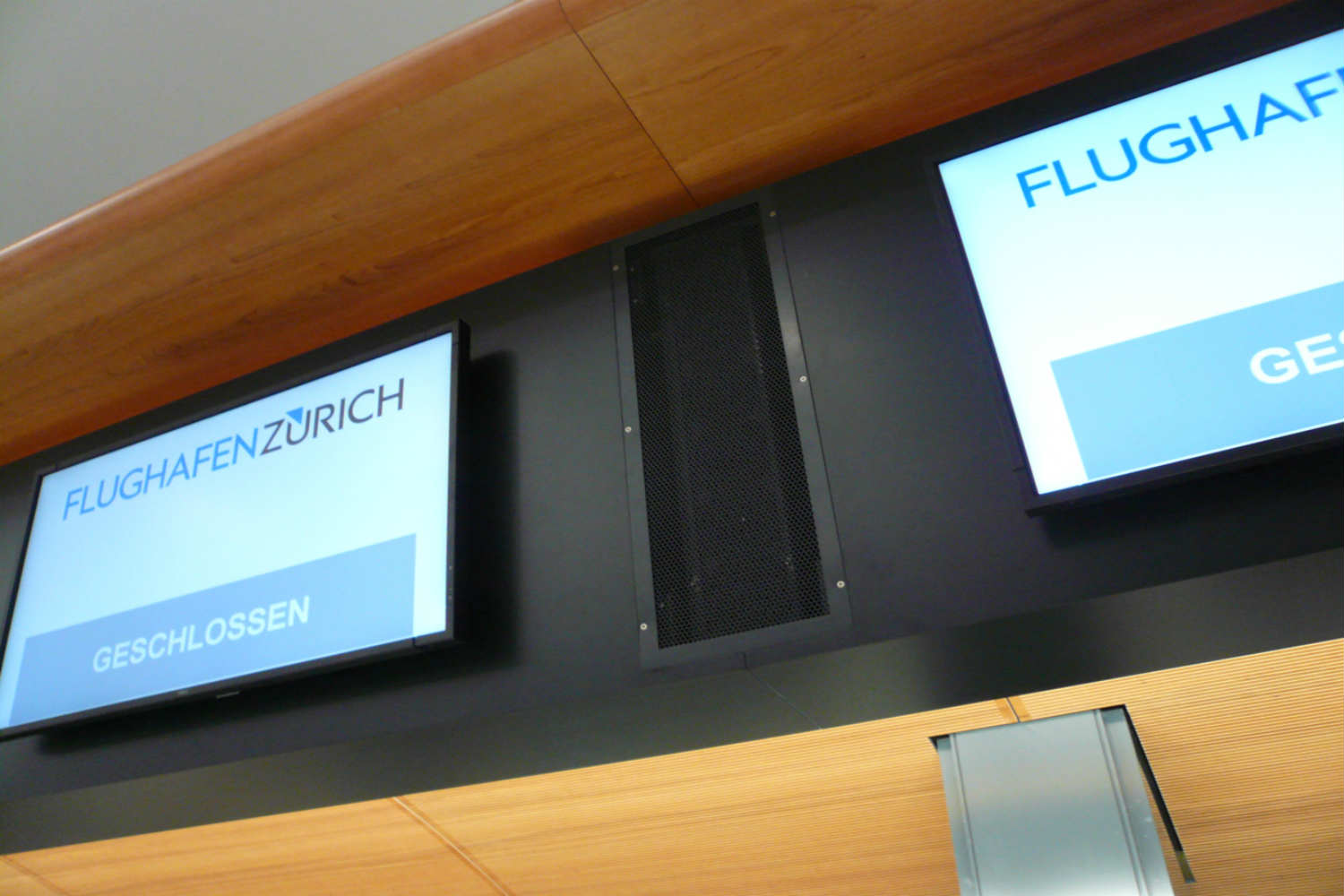Project Description
Overview
The project “Flughafenkopf” is part of the 5th expansion of the Zurich Airport. The expansion is handled by a Joint Venture of Itten+Brechbühl AG, Nicholas Grimshaw & Partners Ltd., Ernst Basler + Partner AG and Ove Arup & Partners International Ltd. and consists of both the: Airside Center – a spacious service area with restaurants, shops, and lounges between the existing terminals and A and B fingerdocks, and the Railway Terminal / Shopping Mall – a complex consisting of a new railway terminal with check-in counters, a larger shopping mall, and a newly designed bus station.
Program
The Airside Center (A500), located between the existing fingerdocks A and B, acts as a focal point for travellers at the airport. Many new shops and restaurants are opened. The Airside Center project comprises of the new Airside Center, the Underground Skymetro Station which connects the Airside Center to the Dock Midfield, the Arrival Hall just above the Skymetro station, and various renovations within the A and B terminals. The previously existing buildings are all connected and the Airside Center, with its prominent shape, reflects the new identity of the airport.
The new Railway Terminal (C500) and Parking Lot C are located at the junction of all access ways to the airport. With its 60 check-in counters, the Railway Terminal is more accessible to passengers arriving by train, and the restaurant and retail space has almost been doubled. Along with the Railway Terminal, the new Bus Station optimally connects the Zurich Airport with the public transportation system.
Acoustics
WSDG was awarded the full electroacoustical design of both these new facilities by the responsible electrical engineering firm, Ernst Basler + Partner AG. WSDG’s project scope comprised the following tasks:
- Definition of electroacosutical project requirements (e.g. Speech Intelligibility, Sound Pressure Levels, Frequency Responses, Coverage etc.) in line with the appropriate national and international standards, including IEC 60849.
- Electroacoustical design and optimization with assistance of computer simulations and other means of calculation.
- Specification of electroacoustical components (e.g. loudspeakers), including radiation patterns, power, headroom etc. Definition of installation parameters for these components.
- Supervision of driver electronics to the electroacoustical system (Digital Signal Processing (DSP), amplification, exisiting paging systems etc.)
- In close collaboration with the architectural and engineering teams: Modifications and fine-tuning of the electroacoustical design.
The electroacoustical design has been developed by modelling both large-volume spaces in CATT Acoustic. This software package allows full modelling of architectural spaces and experimenting with all sorts of surfaces, electroacoustical solutions, loudspeaker positions etc.. An optimal solution has been found and presented, including auralisations of the finished projects (you can listen to an announcement reproduced by the modelled system without actually having to build the space and the electroacoustical system). This solution was finetuned during collaboration workshops with the architectural team, the lead design team, the electrical engineering team etc.
Technology
The specified system for the large open spaces with high ceilings is based on Duran Audio’s Intellivox loudspeakers (a total of 16 units). These line array loudspeakers offer full digital beam steering control and due to their narrow form factor can be installed close to invisible. Ancilliary specified loudspeakers for support spaces and adjacent areas are highly directional units from Frazier and HK.

